Types of Asexual Reproduction
In asexual reproduction, the offspring are identical clones of the original parent. This reproduction happened by single parents. It is one of the fastest forms of reproduction as there are no gametes, and two organisms are not required. Prokaryotic microorganisms (bacteria) and certain eukaryotic single-celled and multi-celled creatures use this kind of reproduction. Fission, budding, fragmentation, and parthenogenesis are all methods for some animals to reproduce asexually.
Types of Asexual Reproduction
Here are the following types of asexual reproduction
1) Fission
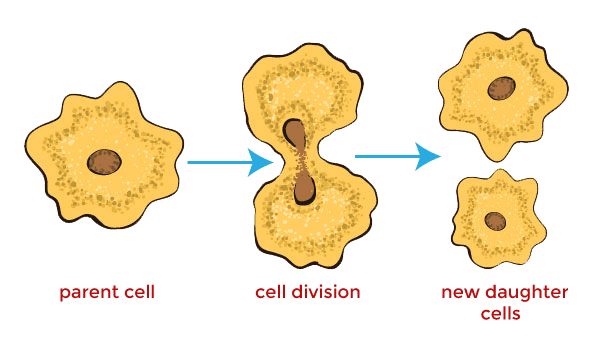
Fission, also known as binary fission, occurs in prokaryotic, protozoa, and certain multicellular invertebrates. A cell splits into two different cells and becomes two new fully developed cells after a period of growth. Each cell has identical genetical identities like its parent cell. Mitosis is a binary fission process that occurs in some unicellular eukaryotic species. In certain species, a portion of the individual splits, resulting in the formation of two distinct entities. Many asteroid echinoderms, for example, go through this phase by dividing their central disc. Some sea amoeba and coral polyps also use fission to reproduce.
2) Budding
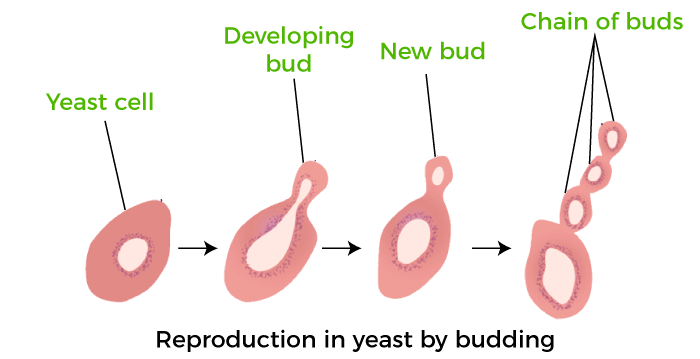
Budding is an asexual reproduction that occurs when a portion of a cell or organism outgrows on an existing one. After development, the individuals are separated from its parent and the cycle keeps going on. Some invertebrate species, such as corals and hydras reproduce through budding. In hydras, budding happens when an adult breaks from its body. Whereas in coral, the bud remains attached to its body, and to reproduce, it multiplies and forms a new colony.
3) Fragmentation
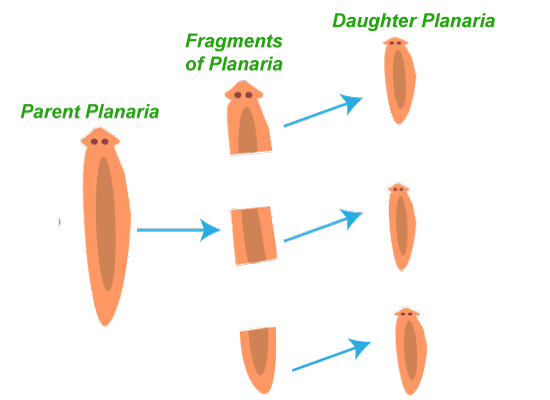
Splitting the parent organism into two or more parts and the growth of these parts to become identical parent organisms is known as fragmentation. A distinct individual will regenerate if the animal is capable of fragmentation. This split can be either intentional or unintentional on the part of the organism. By fragmentation, many sea stars reproduce asexually. A damaged arm of a single sea star, for example, will regenerate into a new sea star. Anglers have been known to cut sea stars in half and throw them back into the water to kill them if they devour their clam or oyster beds. As a result, each half regenerates into new individuals forming twice as many sea stars preying on the oysters and clams. Annelid worms, turbellarians, and poriferans all reproduce through fragmentation.
4) Parthenogenesis
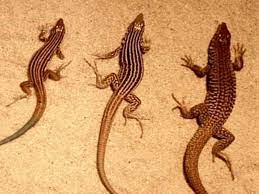
Parthenogenesis is an “incomplete form of sexual reproduction, which is referred to as asexual reproduction. In this, an egg that grows into an entire individual without being fertilized is known as parthenogenesis. Depending on the procedure and the species, the offspring might be either haploid or diploid. Rotifers, certain ants, water fleas, aphids, wasps, stick insects, and bees are examples of invertebrates that undergo parthenogenesis. Vertebrate includes reptiles, amphibians and fish, which shows Parthenogenesis.
5) Spores Formation
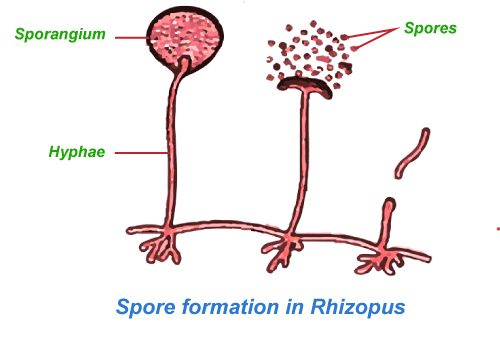
Spores are used by protozoans, bacteria, plants, and fungi to reproduce. Spores are structures that are formed naturally as part of an organism’s life cycle and are meant to be separated from the organism and dispersed across a medium like air or water. When the conditions are right, the creatures release their spores, which are then treated as completely independent and self-contained entities. The spores will grow into fully developed creatures and eventually produce their spores, continuing the cycle if placed in the appropriate habitat.
6) Vegetative Reproduction
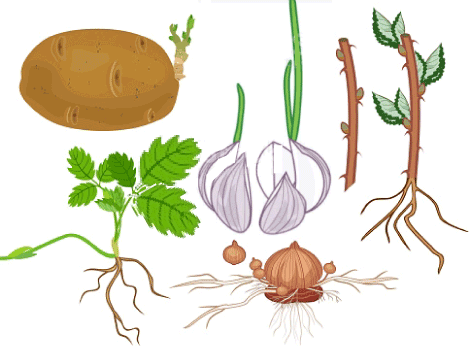
Many plants have acquired genetic traits that enable them to reproduce without using seeds or spores. Strawberries’ aerial stems, tulip bulbs, potato tubers, dandelions’ shoots, and orchid keikis are all examples of prostrate aerial stems. This specialisation is especially common in areas with difficult seasonal circumstances; it helps plants survive and grow in settings when the regular seeding process is frequently disrupted.
